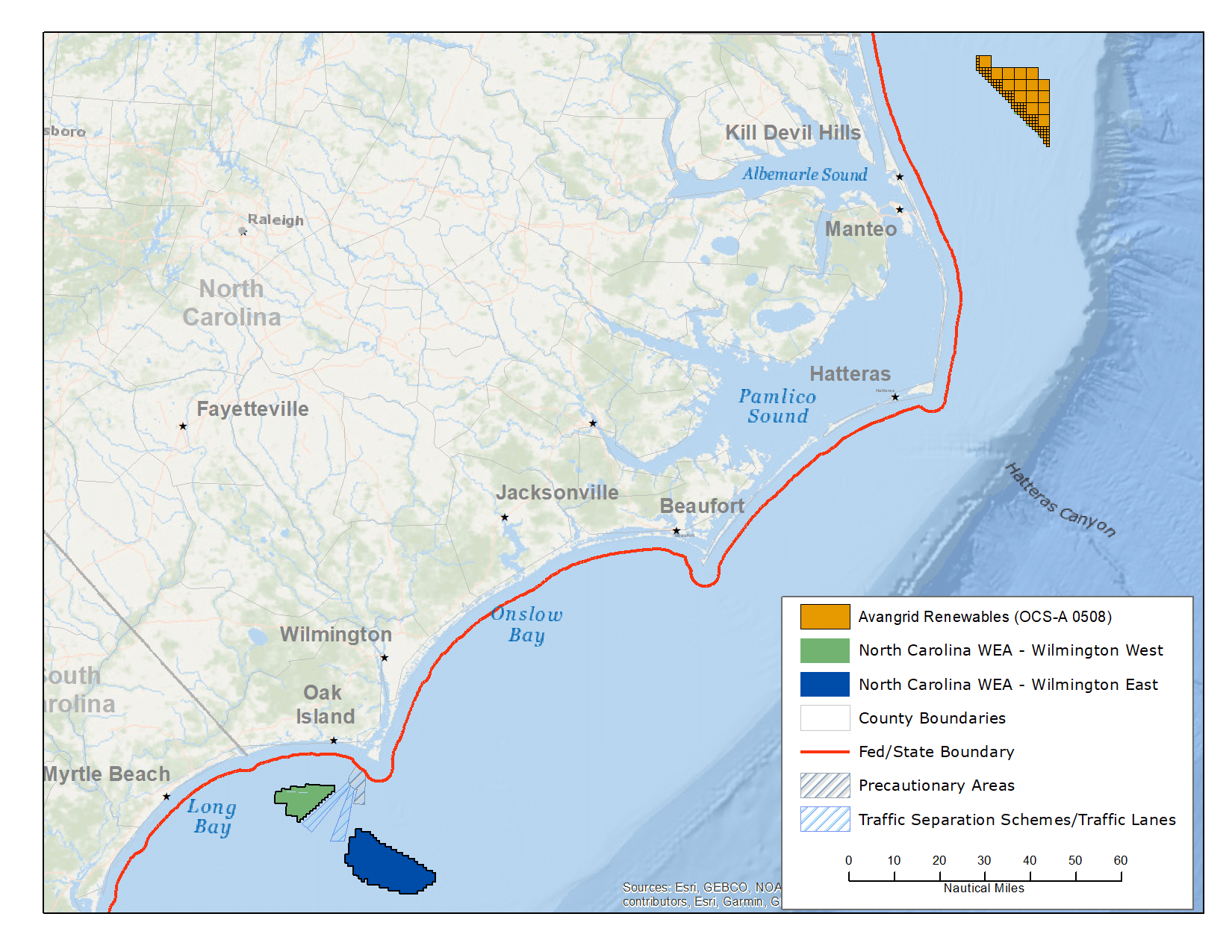Offshore wind can play a critical role in our clean energy transformation. By issuing Executive Order 218, Governor Cooper committed to helping North Carolinians achieve major economic and environmental benefits from offshore wind.
Chris Carnevale | June 10, 2021 | North Carolina, WindOn June 9, North Carolina Governor Roy Cooper issued an executive order titled “Advancing North Carolina’s Economic and Clean Energy Future with Offshore Wind” (Executive Order 218), aimed at helping to establish North Carolina as a leader in offshore wind energy.
What does the offshore wind executive order do?
First, EO 2018 formally recognizes the potential that offshore wind can play in benefitting North Carolinians by boosting the state economy with business opportunities, jobs, and revenue, while protecting people from the worst impacts of the climate crisis.
Second, the order set targets for the state to develop 2.8 gigawatts (GW) of offshore wind capacity off the NC coast by 2030 and 8 GW by 2040.
Third, the order outlines steps the State will take to help meet the development goals, including:
- Establishing a clean energy economic development coordinator within the state Department of Commerce, who will generally lead clean energy economic development opportunities on behalf of the State;
- Establishing a task force dedicated to developing guidance to the Governor and General Assembly on economic development and other opportunities for North Carolinians from offshore wind, comprised of individuals representing state and local government, the offshore wind industry, economic development, workforce, military, higher education, environmental protection, equity and justice, marine industry, and tourism;
- Instructing the state’s environmental regulator, NC Department of Environmental Quality (DEQ), to work on offshore wind leasing and development, and establishing an offshore wind coordinator position within the department;
- Establishing an offshore wind coordinator position in the NC Department of Military and Veterans Affairs; and
- Recommitting the Governor’s Office to continuing to convene interagency cabinet-level offshore wind workgroup meetings.
Putting the Offshore Wind Targets in Context
The Governor’s offshore wind energy development targets of 2.8 GW by 2030 and 8 GW by 2040 are large and put North Carolina in a national leadership position, but are certainly achievable. Each GW of offshore wind would power about 250,000 North Carolina homes, meaning 2.8 GW would power about 700,000 homes and 8 GW would power more than 2,000,000 homes or about one-quarter to one-fifth of total annual electricity generation statewide.
The targets are among the largest in the country, demonstrating leadership and ambition, yet are not so large as to be prohibitive. For example, the 2030 target of 2.8 GW would almost be completely fulfilled if North Carolina’s currently underway offshore wind project, called Kitty Hawk Offshore, is built out to its full capacity of up to 2.5 GW.
To meet the 8 GW target by 2040, new areas will need to be identified and leased off North Carolina’s shores. Two Wind Energy Areas (WEAs) have been identified – but not yet leased – off the coast from Wilmington, together representing about 1.5 times as much acreage as the Kitty Hawk project, suggesting the ability to host perhaps an additional 3-4 GW of capacity. Put together, if the Wilmington WEAs – as they are currently configured – and the Kitty Hawk lease area are fully developed, all three current North Carolina offshore wind energy areas would host perhaps as much as 6 GW of offshore wind–though likely less– thus still leaving a need for leasing additional areas.

How Could North Carolinians Benefit from Leadership in Offshore Wind?
In order to avoid the worst impacts of the climate crisis, our entire economy must get to net-zero carbon by mid-century and about halfway to zero by 2030. Already, the electricity sector is primed for even faster decarbonization. Offshore wind development reduces pollution and improves public health, mitigates the impacts of the climate crisis, creates jobs, and drives investment. Early commitments and investments to offshore wind energy will help North Carolinians make the progress necessary in decarbonizing the state economy to help protect people and the environment from the climate crisis.
The NC Department of Commerce issued a report in March that found that offshore wind energy development along the Atlantic is a $100+ billion market through 2035. By prioritizing local offshore wind development, North Carolina can better position itself to capture a piece of that market. In fact, offshore wind development at the scale set forth by Governor Cooper would be a large economic boom for North Carolina, potentially creating hundreds or thousands of jobs and attracting economic investment into the state.